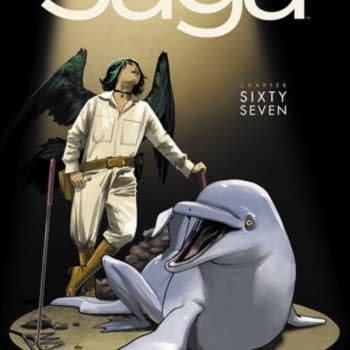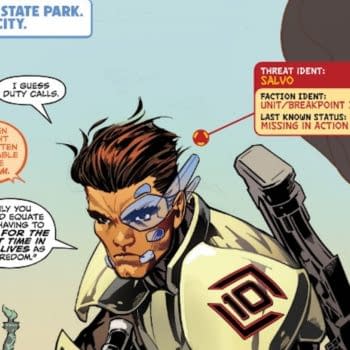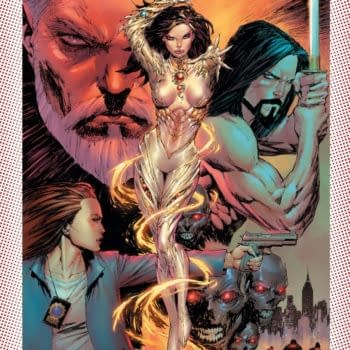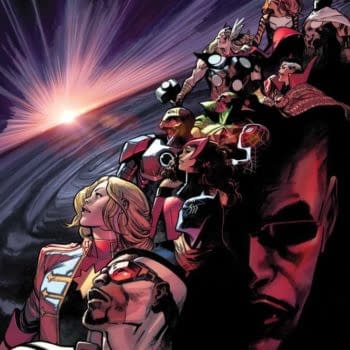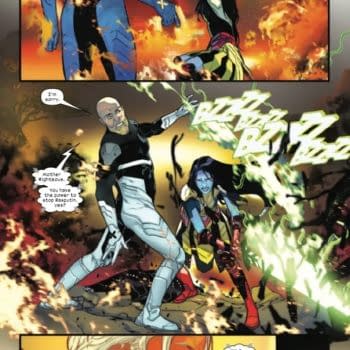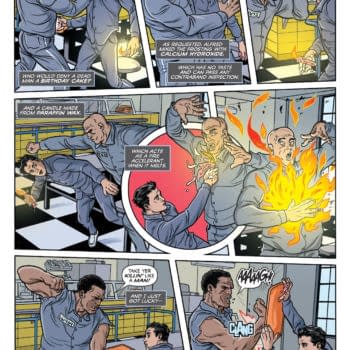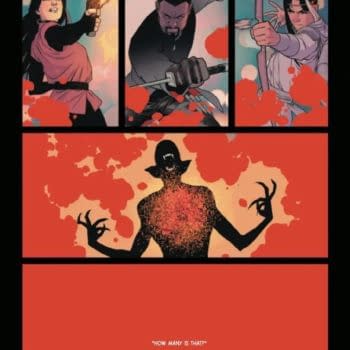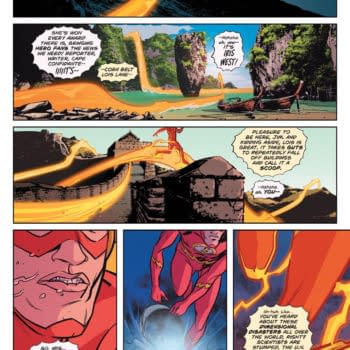Posted in: Comics | Tagged: Batman, Comics, dc, death of the family
Bat-Family Dinner: Rise Of The Joker Mantle
Will Romine writes for Bleeding Cool;
Hello Folks, It's your old pal Will Romine here with a brand new feature here on Bleeding Cool: "Bat-Family Dinner." In many ways, the Bat-Family is like any other family. Though the individual members may live life for different reasons and cavort with their own cast of characters, they are invariably bound to one another through kinship and a common mission I've always looked at family dinners as a way to pause, chit chat, and weave the disparate threads that bind family, but ultimately become frayed when neglected. In our family dinners, I will explore the interplay between select Bat-Titles and try to unify them through their shared themes. Now pull up a chair and let's dig in!
The Menu
Batman #13, The Batman Panel at NYCC, Batgirl #13 and Catwoman #13
The Appetizer:
At the NYCC Batman panel, Scott Snyder fully revealed the scope of "Death of the Family." At past cons, Snyder repeated two distinct themes of DOTF. First, that the Joker views himself as the court jester of Gotham who must deliver the tragedy of the realm to his king, Batman. The second theme revolves around Joker's past attacks on the Bat Family. From crippling Barbara Gordon to murdering Jason Todd, the Joker has left his mark on Batman's adopted family. However, the Joker attacked the Bat Family merely as a way to get to Batman. In DOTF, he goes after the Bat-Family as an end unto itself.
At New York Comic Con, Snyder married these two themes into a clear purpose for the Joker's return to Gotham. The Joker believes that the family that the Batman has built around himself has made him weak. He believes himself to be Batman's true family. In his return, he hopes to demolish Batman's family and empower Batman's rogue gallery, all to provide Batman with the challenges and tragedies necessary to make him into a stronger king.
The Main Course.
I've already written a review of Batman #13. In this earlier review, I played my cards close to the chest and kept it and tried to remain
spoiler free. Now I can take the gloves off. Batman #13 was about complacency. For the past year of the new 52, Batman fought a new kind of villain, a villain that seemed to paint older villains as quaint relics. Nevertheless, Batman proved to be the superior legend of Gotham and crippled the Court of Owls.
In the dichotomy of new vs. old, we tend to think of new as an improvement on the old. Therefore, we think that if we master the new, we can disregard what came before it. The Joker is an old villain, perhaps one of Batman's oldest. However, "old" comes in many favors, my two favorite are "obsolite" and "classic". The primary difference between the two is that a classic draws strength from its age, whereas something obsolete comes off as a relic. This is why the Joker is a rogue for all seasons, whereas villains like Toyman must be reinvented for each generation. Put it simply, "New Coke" may taste better than the Classic, but it will never replace the warm and fuzzies of the Classic.
There's a reason why the villains of the DCU tell Joker stories around the campfire. The Joker's greatest power lies not in specialized weaponry or specialized training. Instead, the Joker possesses the most powerful ability of them all; he cultivates and honors his own past, while still remaining unpredictable In Batman #13, he marks his return by targeting the son of his first (public?) murder, though not in the way one might expect. Furthermore, when Commissioner Gordon first recognizes the dark silhouette of the Joker, his fear is equal parts memories of what the Joker did, and what the Joker will do. Nobody gives two shits about the victims etched into Victor Zsasz's skin, but everyone remembers when the Joker paralyzed Barbara Gordon.
I feel that the Joker's mastery of tormenting others with his own past deeds will figure heavily into Death of the Family. Batgirl #13 and Catwoman #13, while labeled as DOTF tie ins, do not read as such in that they do not figure heavily into Joker's return. However, the two issues do play into the modus operendi detailed above. Both Selena and Barbara face reminders of past tragedies, which may or may not involve the Joker.
In Catwoman #13, We learn more about Selena's New 52 past. Catwoman #0 really played up Selena's orphan upbringing and #13 touches upon this. "Never trust a warm bed, or a happy life" is a mantra for Selena, and it's one that echoes the Joker's sentiment of Bruce's attachemnts making him weak. This similarity warrants future exploration and might define Catwoman's role in DOTF.
In this issue, we learn of Lola, Selena's past friend/tipster with a penchant for toys. Lola becomes a collateral casualty when an unseen attacker blows up her apartment, presumably targeting Selena. Fast forward to the present day, Catwoman encounters charred playthings from Lola's apartment, memento morae of the consequences of friendship. Though it's not spelled out, the presence of Cheshire grins and jester iconography indicate ol' beef jerrky face's involvement. Was the Joker responsible for the explosion? If so, that's quite the long game for a villain that thrives on spontaneity and impulsiveness.
In Batgirl #13, Barbara spends most of this issue fighting a generic, forgettable villainess with a forced backstory. In many ways, this felt like a filler issue, banked in order to meet shipping deadlines. The Joker doesn't factor in until close to the end. Barbara is on the phone with her mother when she hears a commotion on the other end. Cut to the Gordon household, where henchmen in clown masks break through Mrs. Gordon's door. One of the henchmen is wearing an iconic telephoto lens and Hawaiian shirt combo. Though it's not the Joker behind the mask, it's a great example of the Joker leveraging past deeds to terrorize. In the present.
The Dessert
The henchmen that break into the Gordon household all wear clown masks. This has been a stock appearance of Joker's hired help across comic, cartoon, and film media. Your average Joker henchman is hired muscle, coming from what I imagine is the busiest temp agency of the Gotham underground. Depending on who signs his checks, he could wear a clown mask one day, and question marks the next. Once he puts on the mask, he is interchangeable. If he falls, the Joker can simply hose off the mask, call the temp agency, and order a replacement.
Now, the Joker wears a Clown mask. This begs the question: is the Joker an individual, or an ideal to be adopted? Will we see the rise of the "Joker mantle," where Joker expands his "Joker Family" beyond Harley Quinn? Batman's cowl makes him immortal. If Bruce Wayne dies, Batman lives on. Perhaps Joker's face is a totem of similar significance. At the NYCC Batman panel, Grant Morrison revealed his plans to revisit the Batman 666 future where Damien has adopted the cowl. Perhaps the Joker of that era has inherited the original face. Let's hope preservation techniques have kept pace.
I hope you enjoyed our little family dinner. Take some time to digest. Agree or disagree, I'm interested in hearing your feedback. Sound off below, or shoot me a tweet @notacomplainer.









